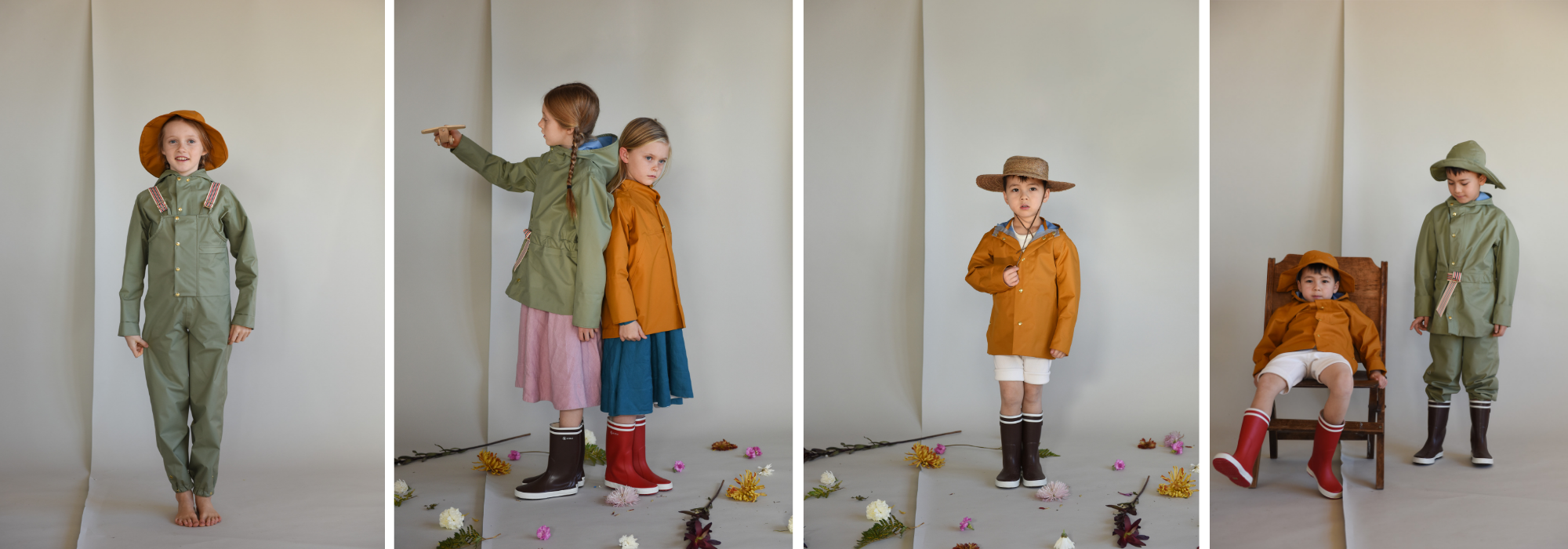A conversation with...Tabitha Osler
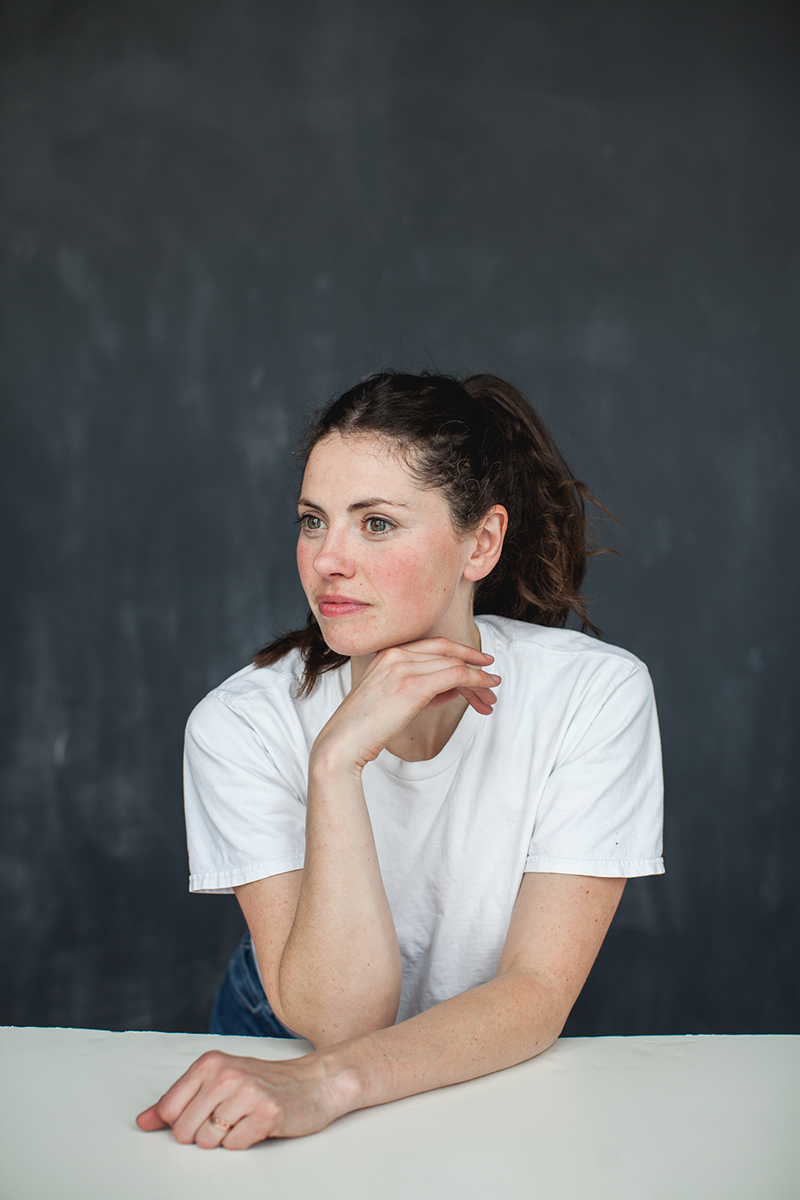
The founder of Faire Child, reveals the secrets of purely sustainable fashion!
Tabitha Osler, a designer, a mother and an entrepreneur, revolutionizes the whole childrenswear industry! Using an innovative approach to making outerwear, her brand Faire Child produces stylish minimalistic outerwear by using sustainable materials made from recycled water-bottles.
In the interview, Tabitha speaks about her background, the story behind the brand and the ingenious idea of sustainable production, as well as about the evolution of the apparel industry.
How was Faire Child born?
I studied Fashion Design at Antwerp Royal Fashion Academy. After obtaining my Masters, I worked in the luxury fashion industry in Canada and Europe. It was during that time that I became increasingly aware of the change needed in my chosen field. Second only to oil, fashion and textiles are the most polluting industries in the world. Every stage in a garment’s life threatens our plant and its resources.
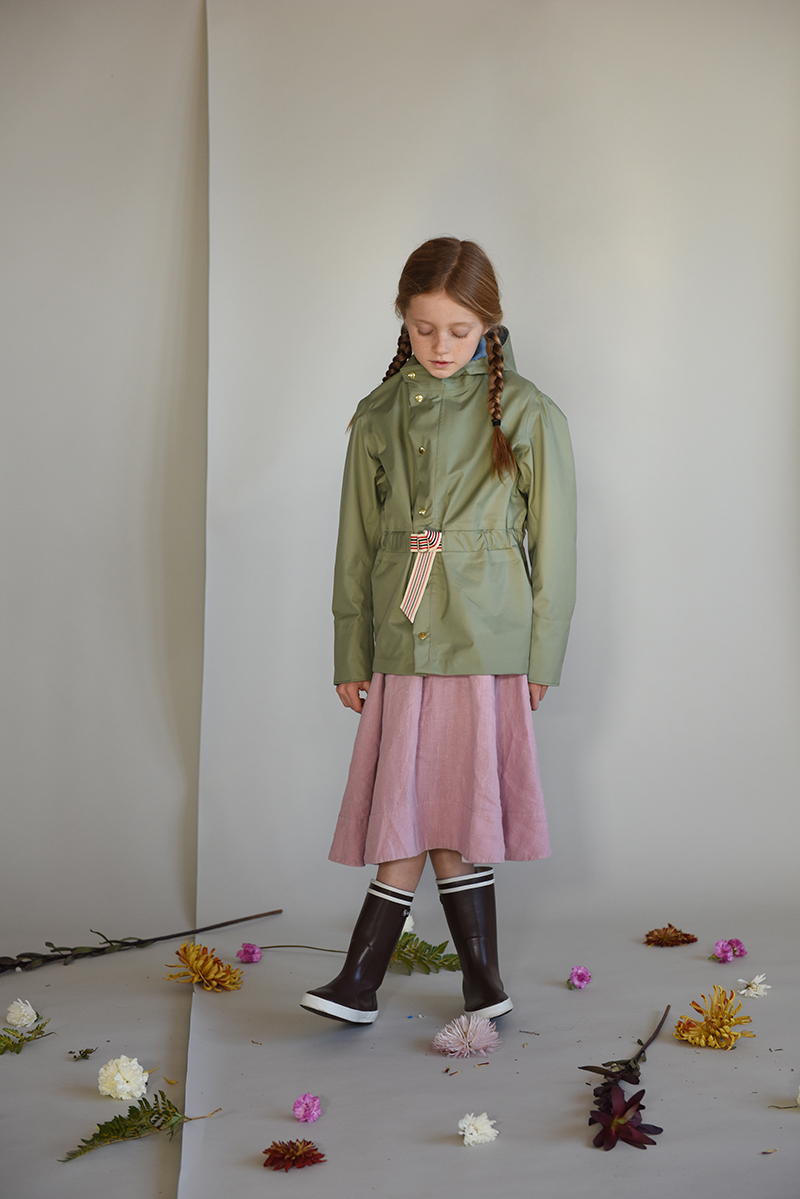

When faced with this reality, my question became, how do I reduce my environmental impact as a Fashion Designer? This is when I started focusing on the entire life cycle of a garment. What is the origin of the content? Is it made responsibly? And most importantly, what systems are in place to dispose or recycle it?
The desire to find a solution to those questions was amplified by my entry into motherhood. I began to wonder what the effects of fast fashion would have on the world my daughter would live in. Would she have access to fresh water, bounties of food and natural resources?
I knew that if I was going to continue to be a Fashion Designer that I had to be conscious of my environmental impact. I needed to not just do less bad, but more good.
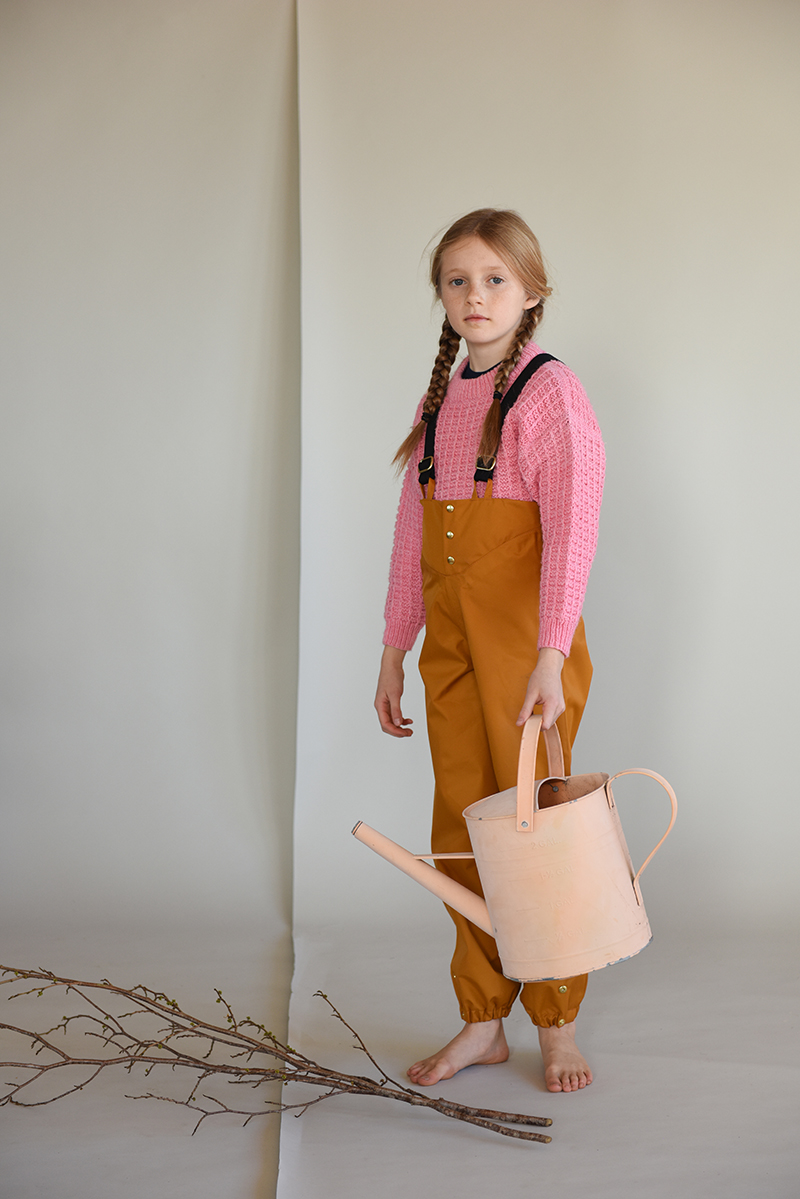
I started Faire Child because I wanted children to engage with their outdoor environment. I wanted to be able to create waterproof garments that would allow children to be outdoors, whatever the weather.
I was having trouble finding good quality outerwear for my child that was made responsibly. I saw a need and I set out to fulfill that need.
Why Faire Child?
The word “Faire” in French means “to do; to make; to play”, I wanted to make outerwear that allowed children to make and play outside, whatever the weather.
I also love the word “Faire” and its connotations to fair trade, which we hold as a core value.
Where did you take inspiration for creating an ethical outerwear brand?
Before starting Faire Child I worked in luxury women’s wear. I was witness to how wasteful the fashion industry is, especially the luxury fashion industry. I knew it wasn’t sustainable and I wanted to be a positive force for change.
My goal was to create a sustainable brand in what of the least sustainable sectors of fashion. Childrenswear (because they have such a short life cycle) and outerwear (because truly sustainable outerwear was non-existent). So I began to think of the entire life cycle of garments. Our garments are made to be endlessly reusable.
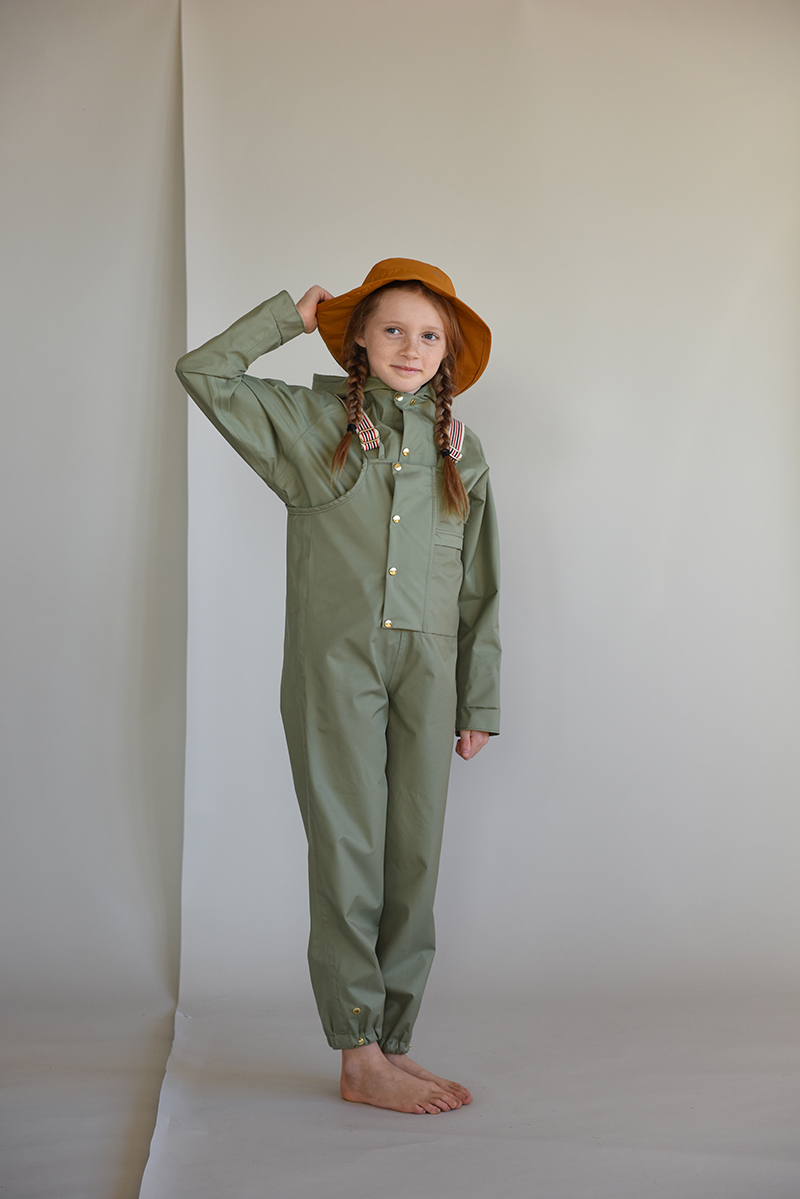
The fabric we use and even notions are all made from recycled materials and can all be recycled again after use. That being said, these garments are meant to be usable for a long time - they are built tough.
After a child outgrows a garment they can be passed off to a friend or family, donated or resold. When this stage of the material’s life is over, the garments are sent back to us where we prepare the garment for recycling. This is done by separating out the snaps for brass recycling from the fabric which enters a PET recycling process.
A closed-loop model is my goal, where no raw material is wasted, but is recycled, endlessly.
Do you have a mantra?
Lean into discomfort, anything is possible, your dreams are important, let them come true!
Can you tell us more about the brand’s unique innovative approach?
Having a product that was designed with the end of life in mind was pivotal for me. I didn’t want to see the garments I made ending up with the millions of tonnes, 15 million tonnes in the US alone, of textile waste that enters our landfills every year. I am very inspired by the Cradle to Cradle design philosophy that encourages us to view waste as a resource.
The fabric we’re using is quite exciting. We partnered with Sympatex, a German company working at the forefront of eco-textiles, to make it all possible. They have created a 100% waterproof fabric that is made solely from recycled PET water bottles – no other chemicals or materials are used in this fabric which is pretty revolutionary. Fabric is usually coated with fairly toxic substances to keep water out.

The other great thing is that our fabric diverts waste from landfills not once, but twice. The fabric is made from recycled material and then Sympatex has developed this fabric so it can be recycled again. Our garments never have to end up in a landfill – customers send them back to us at the end of their very long life and we take responsibility for recycling them.
How did you came up with the idea of recycling water-bottles?
So glad you asked! We are huge champions for the fabric we use and for the innovative textiles being made by Sympatex. I discovered the fabric through the Sustainable Angle Fashion Expo in the UK.
Sympatex has taken advantage of the unique properties of PET, commonly used in water bottles, and harnessed them into an amazing textile.
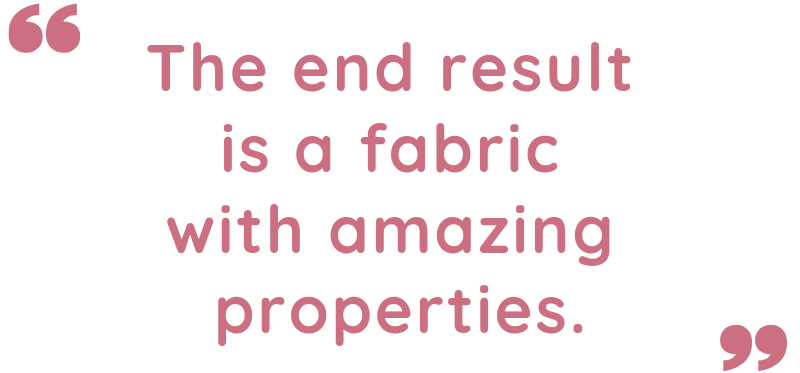
As far as the manufacturing process goes, after the PET bottles have been recycled, Sympatex processes them by crushing the bottles into small bits that are then reformed into a yarn. These yarns are woven into a textile that is 100% recycled, 100% waterproof, windproof, breathable, soft and lightweight and moisture wicking.
They are also Bluesign and Oeko-tex certified which means no harmful chemicals have been used to make the fabric. Using rPET, or recycled polyester, as opposed to traditional virgin polyester, helps divert waste from landfills and reduces our dependency on petroleum as a raw material. It takes 19 average water bottles to make a Faire child rain coat in size 5/6.

The end result is a fabric with amazing properties. We are confident that children can spend the entire day outside, comfortable, in any season, in this fabric. The real kicker is that the fabric is also recyclable, so it never has to end up in a landfill.
We have set up a take back program so that after many, many years of use the garment can be returned to us and we take responsibility for recycling it.
If you want to get into the real nitty gritty of the fabric’s eco-impact – The rPET (recycled polyester) fabric we use from Sympatex has a 32% reduction carbon emission, a 94% reduction in water use and a 50% reduction in energy use when compared to virgin polyesters.
If you’re super interested in even more details about our manufacturing process, please take a look at our website.
What’s the biggest lesson you’ve learned after founding your own brand?
Dreams can come true, you just need courage, and a smidge of naivety.
In your opinion, how the industry of sustainable clothing is evolving?
I don’t think that many people know how much the apparel industry affects everything. From crops and farmers to sewers and finally end of use, which is usually a landfill. The industry pollutes the water, air, the land, our bodies. It doesn’t have to be this way.
We have numerous examples in nature that our waste doesn’t have to be waste. If we want things to change we need to change people’s buying habits and what they think is acceptable.

I truly think consumers need to be the driving force in the fashion industry. If they demand a more sustainable product, the industry will respond. I believe sustainable clothing will soon be the only clothing we can buy, because, it has to be.
Do you have your own favorite sustainable brands?
Veja, Misha&Puff, Engel, Disana and so many more . . .
What are you planning to do in the future?
We just launched our womenswear line and it was huge success. We will expand there. I also want to make organic insulation layers and have a few collaborations in mind!
The Faire Child Story from Tabitha Osler on Vimeo.

